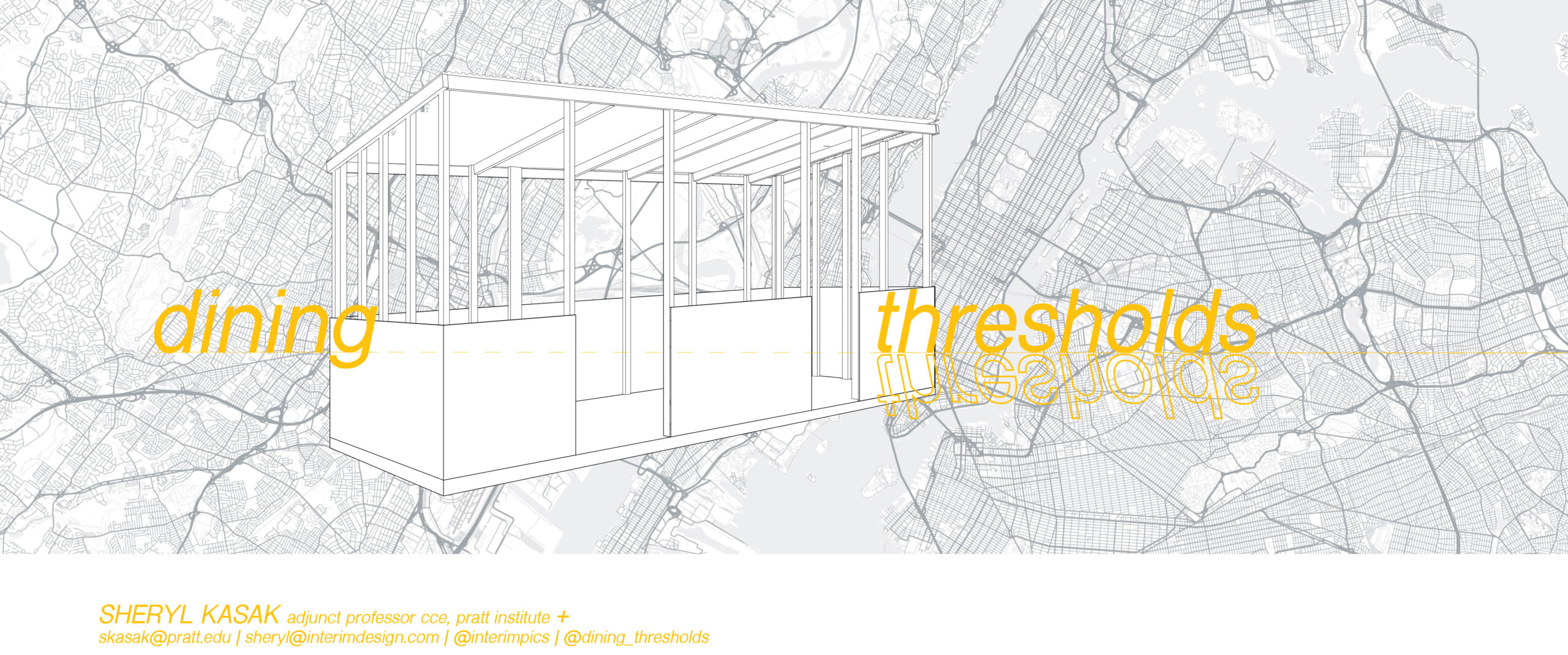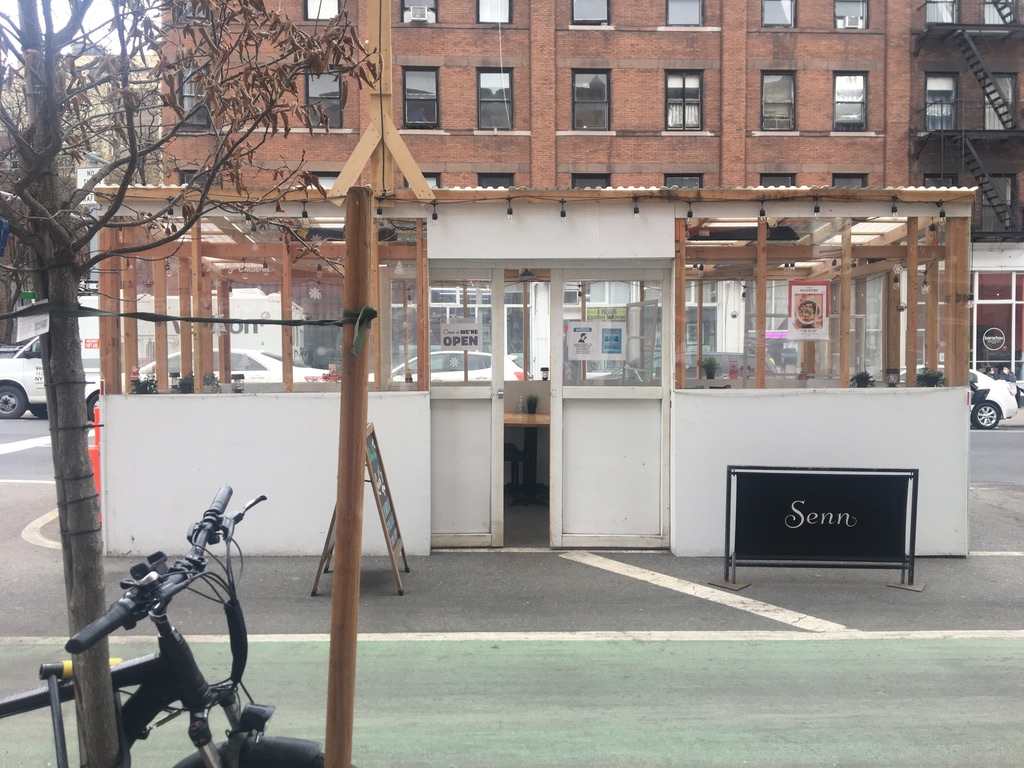Dining Thresholds

Sheryl Kasak
Contributors:
Faculty:
Christian ADAMIK
Students:
Omar Aqueel
Nishi Chitale
Nivya Doshi
Candice Du
Liliya Dzis
Sneh Ganjoo
Vishnu Jayanthi
Apurva Jhamb
Shivani Kolte
Paul Lagasse
Tharani Prabu
Niyati Vira
Caleb Wint
School of Design
DINING THRESHOLDS is an ongoing body of research spanning Manhattan and Brooklyn.
A critical archive surrounding the evolving relationship between outdoor dining and the city of New York in response to the COVID-19 Pandemic. The work began in 2021 as a mechanism for mapping OUTDOOR DINING CONSTRUCTS organized by local [residential] subway stops focusing on community accessibility to restaurant food. DINING THRESHOLDS continues to survey, document and collect in 2024 and to propose new ways of thinking about how we dine within the interstitial space between the interior and the exterior as informed by our findings and current events as they relate to city agency rules and regulations, food insecurity, and neighborhood demographics.
The research manifests as a free digital and open-source database to locate, contribute to, and learn about the OUTDOOR DINING CONSTRUCTS; the now historical factors that influenced them as related to the pandemic and our culture of sharing time together through dining beyond the threshold of a glass and mineral façade.
The culture of traditional indoor and mostly private dining has moved into and intersected the public streets; As the pandemic recedes as a memory for some, many of these constructs have now been removed voluntarily or by mandate or have simply been abandoned by restaurants no longer in business. How can we utilize what we have learned during this experience to best design the threshold for occupancy between public and private as we go forward?
DINING THRESHOLDS is a cross-discipline endeavor and is generously funded through the School of Design’s Graduate Assistantship Fund. Students from the Departments of Architecture, Interior Design, Sustainable Environmental Systems, IxD and School of Design Management have worked tirelessly and passionately over the last three years contributing their insight and expertise. Previous funding has been provided by the Provost’s Office through a Faculty Development Grant.
